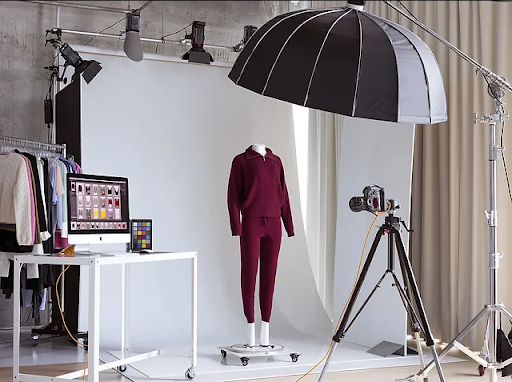In the digital age, where first impressions matter more than ever, high-quality product photography has become a crucial element for businesses looking to stand out. From e-commerce platforms to social media, compelling visuals play a significant role in capturing the attention of potential customers. In this comprehensive blog, we will explore the world of product photography, from the basics of creating stunning visuals to understanding the factors that influence product photography pricing.
The Importance of Product Photography:
Visual Appeal and Brand Image:
- High-quality product images enhance the visual appeal of your offerings, making them more enticing to potential customers.
- Consistent and professional product photography contributes to a strong and cohesive brand image, fostering trust and credibility.
Increased Sales and Conversion Rates:
- Studies consistently show that well-executed product photography leads to higher conversion rates. Customers are more likely to make a purchase when they can clearly see and appreciate the details of a product.
- Visuals play a pivotal role in influencing consumer decisions, especially in online shopping, where customers rely on images to evaluate products.
Social Media Engagement:
- Striking product images are shareable and increase engagement on social media platforms. Social media users are more likely to interact with and share visually appealing content, amplifying your brand reach.
Product Photography Basics:
Invest in Good Lighting:
- Natural light is ideal for product photography. Position your product near a window or use diffused light sources to avoid harsh shadows and highlights.
- Consider supplementary lighting tools, such as softboxes or reflectors, to control and enhance lighting conditions.
Choose the Right Background:
- A clean and uncluttered background allows the focus to remain on the product. Consider using a white or neutral backdrop for a classic and versatile look.
- Experiment with textured backgrounds or settings that complement the product’s aesthetic for more creative shots.
Use a Tripod:
- A stable camera is essential for sharp and focused images. A tripod ensures consistency in framing and prevents unwanted blurriness, especially in low-light conditions or for close-up shots.
Select the Right Camera and Lens:
- While professional-grade cameras deliver optimal results, modern smartphones with advanced cameras can also produce high-quality images.
- Choose a lens that suits your product and desired effect. For close-ups and details, a macro lens is ideal, while a standard lens works well for general product photography.
Product Photography Pricing Factors:
Experience and Expertise:
- Experienced photographers often command higher prices due to their skill, expertise, and portfolio of successful projects.
- Assess the photographer’s background, education, and past work to gauge their level of proficiency.
Equipment and Technology:
- High-quality equipment, including cameras, lenses, and lighting setups, contributes to superior results. Photographers investing in advanced technology may charge higher fees.
- Consider the photographer’s equipment and whether it aligns with the specific needs of your product.
Complexity of the Project:
- The complexity of the product and the desired shots influence pricing. Intricate products, reflective surfaces, or challenging compositions may require more time and effort.
- Communicate your expectations and the intricacies of your product to ensure an accurate pricing estimate.
Editing and Retouching:
- The post-production process, including editing and retouching, is a crucial aspect of product photography. This step ensures that the final images meet the desired standards.
- Discuss the photographer’s approach to editing and whether it is included in the overall pricing or billed separately.
Navigating Product Photography Pricing:
Request Quotes and Compare:
Reach out to multiple photographers to request quotes for your specific project. Compare pricing structures, services included, and the overall value offered by each photographer.
Consider the Value of Professionalism:
While pricing is a crucial factor, consider the value of professionalism, reliability, and the quality of the photographer’s work. A slightly higher investment in a skilled photographer can yield significant returns in the form of stunning visuals.
Negotiate and Customize Packages:
Many photographers are open to negotiation, especially for long-term partnerships or larger projects. Discuss your budget and requirements to customize a package that suits both parties.
Clarify Usage Rights:
Clearly define the intended use of the images and discuss usage rights with the photographer. This ensures transparency and avoids any unexpected costs related to image licensing.
Conclusion:
Product photography is a powerful tool for businesses looking to showcase their offerings in the best possible light. From creating visually appealing images to understanding the factors that influence product photography pricing, businesses can make informed decisions to elevate their visual content. By investing in professional product photography, businesses not only enhance their brand image but also increase the likelihood of capturing the attention and trust of their target audience.

